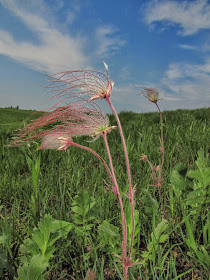During the last two nights I conducted my third of three sets of frog and toad call monitoring for the year at five sites for the FrogWatch USA citizen science program. This year was a pretty good year for my sites, as I logged 10 of the 11 species that could be expected in the South Bend, Indiana area:
- Wood Frog (Rana sylvatica)
- Western Chorus Frog (Pseudacris triseriata)
- Spring Peeper (Pseudacris crucifer)
- American Toad (Bufo americanus)
- Northern Leopard Frog (Rana pipiens)
- Pickerel Frog (Rana palustris)
- Blanchard's Cricket Frog (Acris crepitans blanchardi)
- Eastern Gray Treefrog (Hyla versicolor)
- Green Frog (Lithobates clamitans)
- American Bullfrog (Rana catesbeiana)
 |
| Calling Eastern Gray Treefrog in South Bend, Indiana, June 25, 2014 |
It's always a treat to get to see how these tiny frogs produce such a loud sound. The video below shows a calling Eastern Gray Treefrog.
Frog and toad calls are starting to wind down a bit for the year, but that only means that the singing insects are just getting started. Now is the time to start listening for them as they fill the night with their characteristic melodies.










